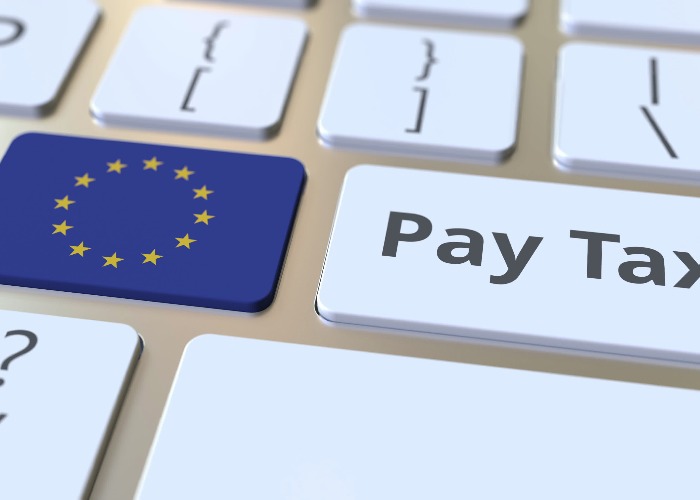Brexit: shoppers face VAT, customs charges when buying from EU retailers

Shoppers are being surprised with additional fees and charges when buying from the continent.
While the headlines are no longer dominated by things like the transition arrangements or whether there is a border in the Irish Sea, the repercussions of the Brexit vote are undoubtedly still being felt, particularly when shopping with EU retailers.
Indeed, our exit from the EU is already impacting the size of the fee we have to pay at the checkout.
The newspapers have been filled with stories of late of shoppers suddenly discovering that their online purchase is going to be more expensive than they initially expected, thanks to all sorts of additional fees and charges that they now have to cough up for.
Let’s take a look at what you might now have to pay ‒ and what you can do to avoid having to spend more.
Who pays the VAT?
The first issue to consider is VAT. Before Brexit VAT wasn’t really something to worry about (unless you were using a tradesman of course) as the tax was essentially included in the price you paid at the checkout.
Things work slightly differently now when you are buying from a retailer based on the continent, based on how much you are spending.
If you spend over £135, the tax is no longer collected at the point of sale ‒ instead, you have to pay at the point of delivery.
As a result, some shoppers are finding that the online bargain they’d found is suddenly not quite such a great deal as they suddenly need to fork out an extra 20%.
For purchases of less than £135, VAT is still collected at the point of sale.
Importantly though, the retailer needs to be registered to pay VAT in the UK rather than in their home country, which apparently has caused some businesses to turn their backs on selling over here entirely.
It’s worth highlighting that buying through big marketplaces like Amazon and eBay are relatively unaffected as the VAT is added from the outset, just as before.
Import charges
VAT isn’t the only consideration though. Again £135 is the key figure here, as purchases above this price point can incur import charges.
Just to make things really easy for shoppers, there are LOADS of different rates here depending on what it is that you are buying, what it is supposed to be worth and even what it’s made from.
As a result that purchase from an EU store could come with an import charge of anything up to 25% of the item’s value.
Ouch.
It’s worth flagging up that these customs charges are the responsibility of the shopper rather than the retailer, which is why some shoppers are reporting suddenly being landed with these bills once the item turns up at their door having had no idea they would have to pay it.
Special delivery!
Just to make those EU purchases even more pricey, you may end up having to pay more for the delivery of the goods too.
Given the fact that everything is far more complicated now, some delivery firms are sticking additional handling fees on these items.
What can I do?

Now the reality is that in many cases you might not have a clue where the online retailer you’re shopping from is based.
It’s one thing if the business calls itself ‘Dutch Donuts’, but if there’s no obvious nationality sign in its name then it’s up to you to do a little early detective work.
Check the 'about us' page
That means looking beyond the eye-catching offers and checking things like the business’s 'about us' or 'contact' sections to establish where they are based, and therefore any additional fees that you might have to pay.
Don't be fooled by the domain
Don’t make the mistake of assuming that because a business has a URL ending .co.uk that they are British either ‒ it’s easy for retailers to set up these websites, even if they are based on the continent.
Try click & collect
If the retailer has physical stores here in the UK, then it’s worth investigating if they offer a ‘click and collect’ service.
It’s not as convenient as getting your items delivered to your door, but it may mean you avoid those import and VAT charges.
Be vigilant for now
Of course, it would be wonderful if we didn’t have to do this, and retailers were completely transparent about what it will cost British shoppers to purchase their items.
But it's possible that a decent number of these retailers haven't fully grasped what the new post-Brexit arrangement means for the fees they and their customers now have to deal with.
Things will become clearer in time, making it much more straightforward to establish just what those purchases will cost us overall, and not just the initial headline price.
But for now, it pays to be extra cautious and perhaps stick to retailers who you know aren’t affected by the changing European landscape if you want absolute confidence from the outset about what your shop will cost you.
Most Recent
Comments
-
The EU is now a foreign "country" and is the same as other foreign countries when you buy from them. This is the problem caused when the political class moved from a "Common Market" to a political "Union" run by unelected politicos.
REPORT This comment has been reported. -
MK22 You continue acting like an ostrich with your head deep in the sand!!!!!
REPORT This comment has been reported. -
@MK22 wrong analogy: we've left a club.
REPORT This comment has been reported.
Do you want to comment on this article? You need to be signed in for this feature









01 February 2021